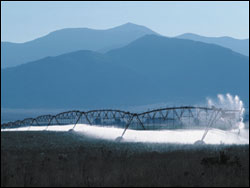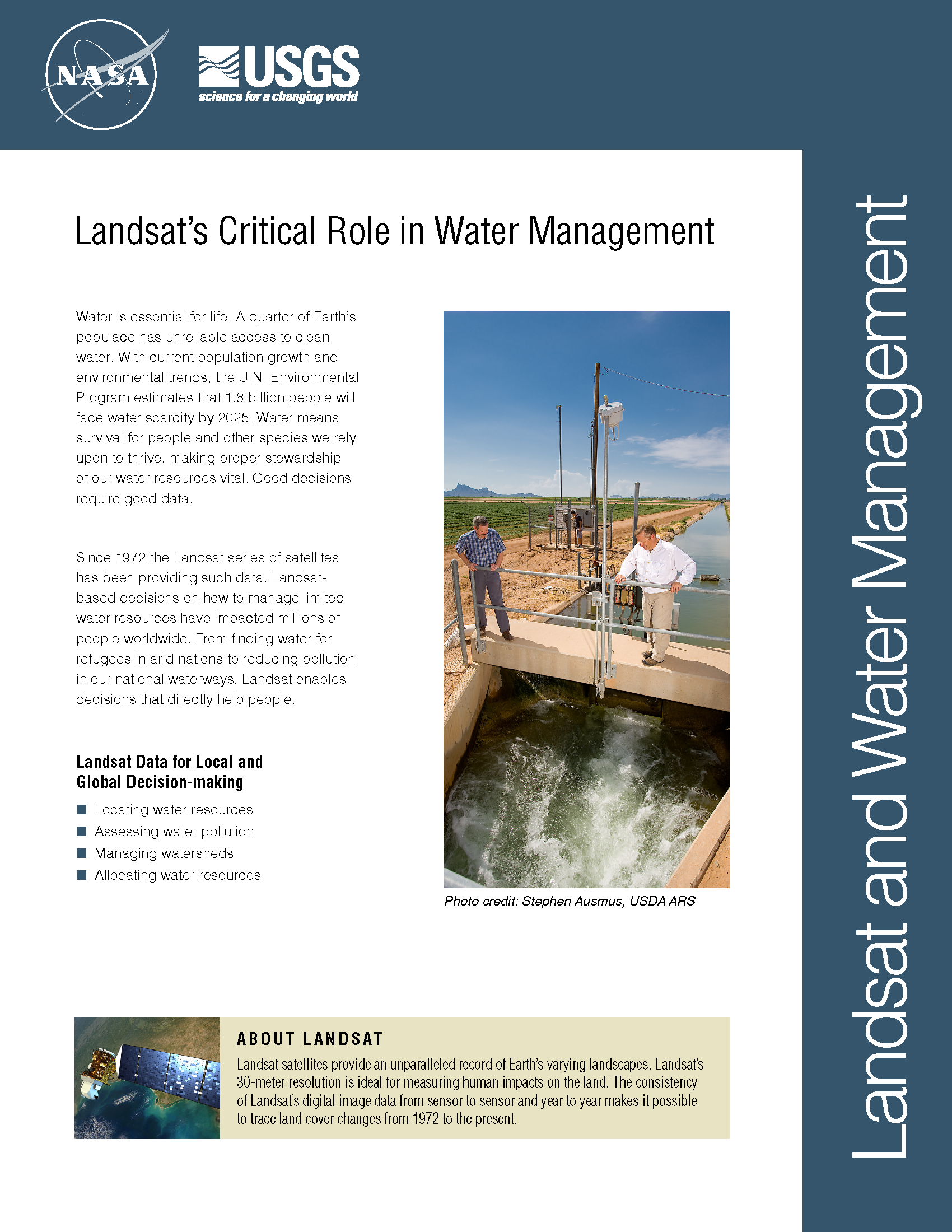Landsat’s Role in Managing Water Resources
Water is essential for life. A third of Earth’s populace has unreliable access to clean water. With current population growth and environmental trends, the U.N. Environmental Program estimates that 1.8 billion people will face water scarcity by 2025. Water means survival for people and other species we rely upon to thrive, making proper stewardship of our water resources vital. Good decisions require good data. Since 1972 the Landsat series of satellites has been providing such data. Landsat-based decisions on how to manage limited water resources have impacted millions of people worldwide. From finding water for refugees in arid nations to reducing pollution in our national waterways, Landsat enables decisions that directly help people.

Precious Resources: Water & Landsat’s Thermal Band
Like most decisions, political and otherwise, having a thermal band on future Landsat missions is a matter of money. In order to show the intrinsic worth of a thermal band, water managers have attempted to quantify the monetary benefits of the improved water efficiency made possible with thermal data from Landsat.
UNEP Releases Atlas of Africa's Lakes That Relies Heavily on Landsat Imagery
The United Nations Environment Programme’s (UNEP) Global Resource Information Database (GRID), located in Sioux Falls, SD, has released an atlas showing landscape-scale environmental changes that have affected Africa’s lakes over

